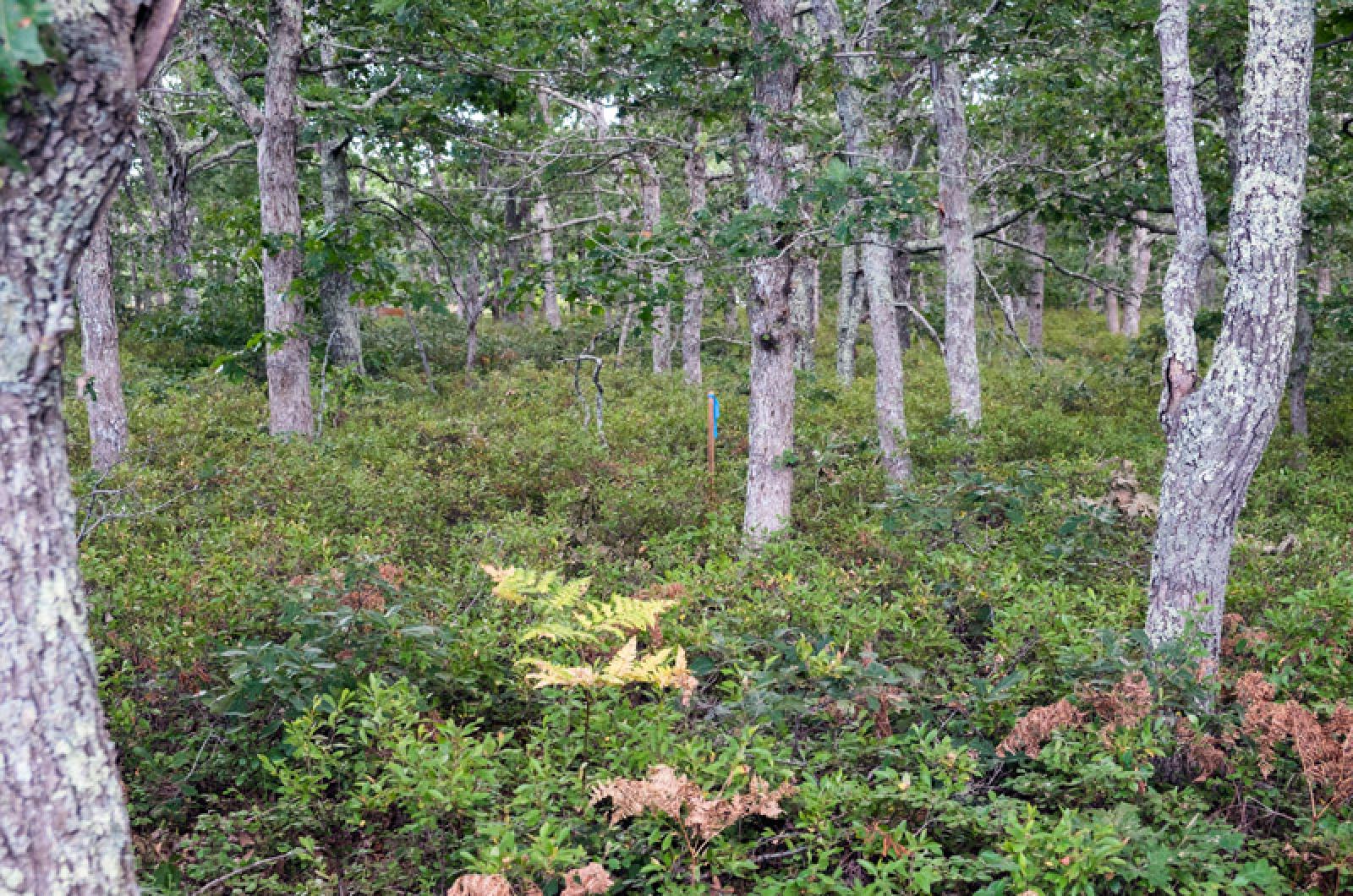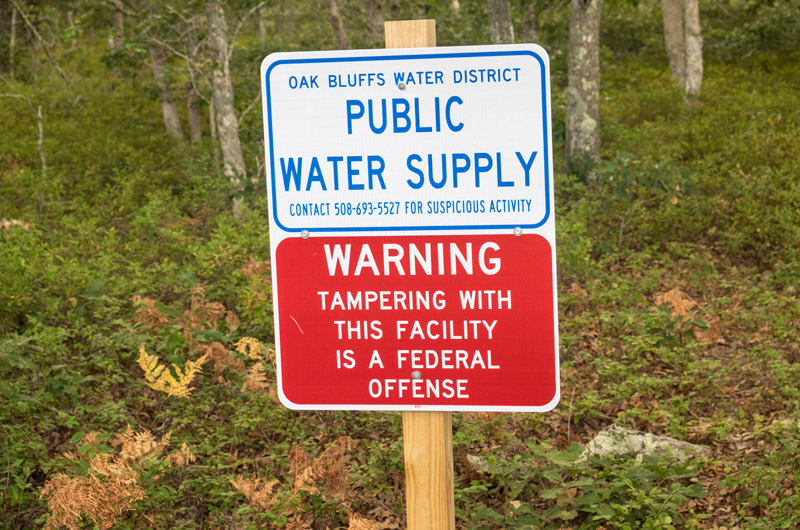A plan by the Oak Bluffs water district to build a large solar array off Barnes Road has been significantly downsized but continues to draw heat from Island ecologists who say removing ancient woodlands would defeat the purpose of developing more renewable energy.
A public hearing on the project that began in February reopens before the Martha’s Vineyard Commission Thursday night.
The revised plan calls for clearing 10.37 acres abutting the Manuel F. Correllus State Forest — about half the size proposed in January — and installing about 1.5 megawatts of solar capacity, compared to the approximately three megawatts first proposed.
If approved, the project will be the first municipal solar array in Oak Bluffs. The five other Island towns all have built arrays in recent years, generating power to reduce town electricity costs. The Oak Bluffs water district, which operates as its own governmental entity and owns the land, aims to do the same.
“We are trying to capture another use of this property, and for any other purpose it wouldn’t be allowed,” water district superintendent Kevin Johnson said this week. “The [water] commission did the best job possible to craft this project so that it would be a cost-savings benefit to a lot of different people.”
The site abuts the Margaret K. Littlefield Greenlands, bought by West Tisbury in the 1980s to protect the aquifer.
Three public wells lie on the property, which has been designated a sole source aquifer area by the Environmental Protection Agency and listed as a rare species habitat area by the Massachusetts Natural Heritage and Endangered Species program. The EPA has given conditional approval and the NHESP has given a preliminary signoff on the plan.
But the project has been controversial for the fact that it would involve clearing a large area of old-growth forest.
In a letter to the commission, Harvard Forest director and West Tisbury resident David Foster called the plan “counterproductive and counterintuitive.”
“Solar production of energy is a critical step for the Vineyard and broader society,” Mr. Foster wrote, “but it should be sited on existing infrastructure or open sites where it does not conflict with and undermine the many benefits of the existing natural infrastructure.”
The Island’s ancient woodlands have declined since the 1800s, although second-growth forest has led to a net gain of woodland cover. Most of the old forestlands, which have never been cleared, extend outward from the 5,000-acre state forest in the center of the Island.
In another letter, Polly Hill Arboretum executive director Tim Boland echoed Mr. Foster’s concerns, writing that the project area “represents a greater opportunity to mitigate climate change through ancient forest preservation.” He weighed the benefits of carbon sequestration, water filtration and plant biodiversity against the benefits of solar power, and warned against habitat fragmentation.
The commission is reviewing the project as a development of regional impact (DRI). A solar energy bylaw adopted last year in Oak Bluffs provides another level of review, including the consideration of open space, visibility and land clearing. But unlike the MVC, the town does not have the authority to deny a solar project outright.
As part of the DRI process, the commission must determine whether the development would have a favorable or adverse impact on the environment in light of the alternatives. Mr. Foster pointed out that the neighboring Goodale Construction Company in Oak Bluffs already has a large solar array, and that as of two years ago, owner Peter Goodale had expressed an interest in expanding it.
“Solar panels are great,” he said. “But let’s put them someplace where there is no carbon sequestration whatsoever, where there are none of the benefits of the forests.”
The MVC meeting begins at 7 p.m. Thursday in the Olde Stone Building in Oak Bluffs.








Comments (6)
Comments
Comment policy »